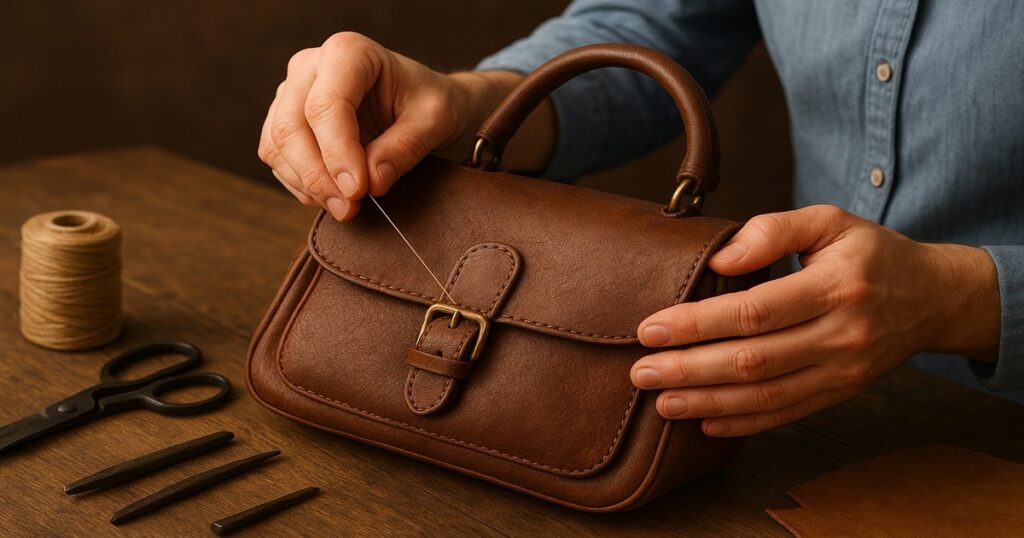
The Art of Leather Bag Repairs: Restoring Timeless Pieces
A good leather bag is more than just an accessory—it’s an investment. Whether it’s a vintage satchel passed down through generations, a luxury tote that cost a small fortune, or a rugged messenger bag that’s been with you on countless adventures, leather bags have a way of carrying stories along with belongings. Unfortunately, even the best-quality leather bags aren’t immune to wear and tear. Scratches, broken zippers, torn stitching, and fading color are all common issues. The good news is that leather bag repairs can breathe new life into these cherished items, saving you from the heartbreak of parting with them.
In this blog, we’ll explore the essentials of leather bag repairs, why they matter, and how you can ensure your favorite bag looks beautiful for years to come.
Why Leather Bag Repairs Are Worth It
Leather, unlike many other materials, ages uniquely. Rather than simply degrading, it develops a patina—subtle changes in texture and color that add character. But with heavy use, bags can also suffer from more serious problems. Handles might weaken, corners may scuff, or hardware can tarnish. Instead of replacing a beloved bag, repairing it keeps its history intact and is often far more sustainable than buying new.
Repairs are not just about aesthetics. A torn lining or broken clasp can affect the functionality of a bag, making it frustrating to use. Professional repairs restore both the beauty and practicality of your accessory, allowing it to continue serving its purpose without compromise.
Common Leather Bag Issues and How They’re Repaired
Scuffs and Scratches
Everyday use inevitably leads to surface marks. Light scuffs can often be buffed out at home using leather cream or conditioner. Deeper scratches may require professional refinishing, where the surface is carefully cleaned, recolored, and sealed.Faded or Discolored Leather
Sun exposure, moisture, and friction can cause leather to lose its rich color. A leather repair specialist can re-dye the material, restoring vibrancy while ensuring the shade blends seamlessly with the original tone.Broken Zippers or Clasps
Hardware is often the first part of a bag to give out. Repair shops can replace zippers, buckles, and clasps with matching or upgraded parts, extending the life of the bag without altering its design.Torn Stitching and Loose Handles
Stress on seams and straps can lead to fraying or complete breaks. Skilled leatherworkers can re-stitch using durable, matching thread. For worn handles, they may reinforce the structure or replace them entirely while keeping the bag’s character intact.Water and Stain Damage
Spilled coffee, rain, or oil stains can leave permanent marks if not treated properly. Professionals use specialized cleaning solutions and techniques to minimize damage, though prevention with protective sprays is always best.
DIY vs. Professional Leather Repairs
While it’s tempting to fix small problems at home, not all leather bag repairs are suitable for DIY solutions. Conditioning and polishing, for example, can easily be done with a good-quality leather balm. However, stitching, hardware replacement, and recoloring are better left to experts.
A professional repair not only ensures the bag is restored safely but also often comes with advice on long-term care. Attempting complex fixes at home risks further damage, which could end up costing more in the long run.
The Sustainability Factor
Repairing a leather bag isn’t just financially smart—it’s environmentally responsible. The fashion industry is notorious for waste, and repairing instead of discarding helps reduce landfill contributions. Leather is a durable material that can last decades with proper care, so giving your bag a second life supports sustainable fashion practices.
Caring for Your Bag After Repairs
Once your bag has been repaired, ongoing care will keep it looking its best:
Condition regularly: Leather dries out over time; a good conditioner prevents cracks.
Avoid prolonged sun exposure: UV rays can fade and weaken leather.
Store properly: Keep your bag in a dust bag and stuff it with tissue to maintain its shape.
Protect from water: Use a leather protector spray to guard against moisture and stains.
These small habits go a long way in preventing future damage.
Final Thoughts
Leather bag repairs are more than a service—they’re an art. A skilled repair not only restores functionality but also preserves the sentimental value and craftsmanship that make leather bags so special. Instead of discarding a worn favorite, consider taking it to a leather repair professional who can breathe new life into it. In doing so, you’ll extend the story of your bag, save money, and make a sustainable choice for the planet.
So the next time your trusted leather companion shows signs of wear, remember: with the right care and repair, it’s far from the end of the journey.
